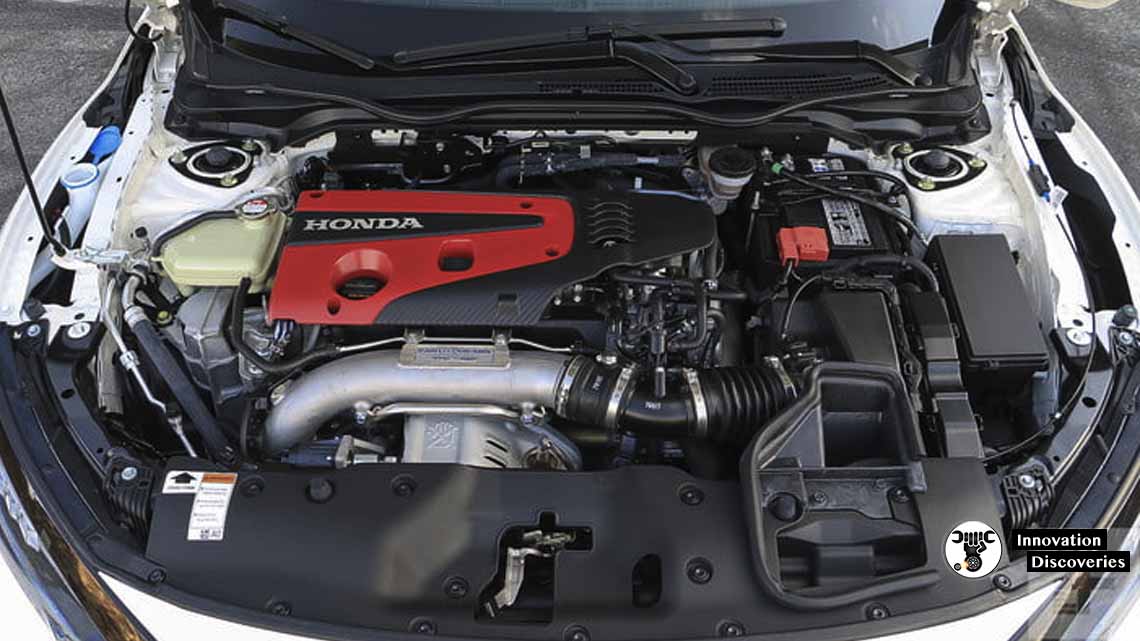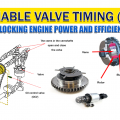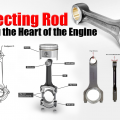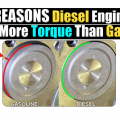
It’s what Honda enthusiasts point to as one of the brand’s main advantages, but to others, it’s become somewhat of a pop culture enigma — and a meme to boot.
It’s called VTEC – short for Variable valve Timing and lift Electronic Control, and it’s what gives you that sudden surge of acceleration moments after stepping on the gas in a Honda.
But why and how does this happen, and what about it makes the Honda VTEC engine different from others?
In this explainer, we hope to give you a better understanding of the process so you can 1) educate yourself and 2) impress all of your friends.
Engine basics
A combustion engine to work requires four things: air, fuel, compression, and spark.
SEE MORE :
- CAR AIR CONDITIONING /AC/ SYSTEM: FUNCTION, COMPONENTS, AND WORKING PRINCIPLE
- AIR BRAKE SYSTEM: COMPONENTS, WORKING PRINCIPLE, AND APPLICATIONS
- Fuel Injector Cleaning: Is It Truly Necessary For An Automobile?
- Difference Between Crankshaft And Camshaft
To understand the VTEC system, we’ll focus here mainly on the air part of that equation.
A part of the engine known as the camshaft controls how much the valves open and then close – and therefore how much air goes into the engine.
On this camshaft are raised points known as lobes, which as the camshaft rotates will push the valves open and then closed.
Larger lobes will open the valves further than smaller ones.

Unless you’re familiar with engine internals, you might have gotten a bit lost in that last paragraph, so let’s define both what a camshaft and a valve are and give you a crash course on how an engine works.
In your engine, the camshaft is a long rod that sits above your cylinder and piston that operates the valves which plug up both an intake (for fuel) channel and an exhaust channel.
One rotation opens the intake channel, allowing fuel and air into your engine’s cylinder.
Your spark plug discharges, allowing the fuel inside to combust, and another rotation opens the exhaust channel as the intake channel is closed, pushing out any exhaust.
Also, read – FIRING ORDER: ITS PURPOSE AND ORDER IN DIFFERENT NUMBERS OF CYLINDERS
During this process, the piston moves up and down within the cylinder to help draw in air and push it out.
Engines can use either a single or dual camshaft to operate these valves.
A single camshaft design operates both the intake and exhaust valves using the same camshaft, while others may employ separate ones.
Regardless, as we mentioned before, these camshafts’ size controls how far those valves may open and close, and whether one or two, those lobes will all be the same size.
The below video explains what we just talked about a little better.
As you can see, there is quite a bit of variable that controls how your engine produces the power to make your car move.
More air into the engine means more power since the combustion process is accelerated. But too much isn’t necessarily a good thing.
The simplistic valve opening and the closing process we described earlier works well throughout lower RPMs. There is sufficient time for the air to enter the engine to facilitate the combustion process.
However, engines are designed to be efficient, so those camshaft lobes must be a size that balances both efficiency and power.
At higher RPMs, your valves are opening and closing so quickly that it’s difficult for this process to occur, and thus your performance suffers considerably.
How VTEC is different
While a bit dated, this video from Honda’s Australian arm does a perfect job of explaining VTEC visually, which we think is better to understand the process overall.
Watch this before reading the rest; it will help our explanation make a whole lot more sense:
In the traditional engine, the camshaft controls valve opening and closing, and its lobes are all the same size.
In Honda’s VTEC engine, as you saw in the video, the camshaft has two different types of lobe sizes: two standard-sized outer lobes and a larger center lobe.
This center lobe is attached to separate center rocker arms from the outer lobes, so only the outer lobes control the valves at lower RPMs.
However, when the engine’s RPMs are suddenly increased, oil pressure causes the center lobe’s rocker arms to lock together and allow the valves to open wider.
Resulting in increased performance and a sudden burst of speed as the engine suddenly can produce more power.
This change in how the engine operates also causes the engine to have a sudden change in pitch — that’s “VTEC kicking in.”
Does VTEC really do anything?
Haters will tell you not — thus why it’s become somewhat of a point of ridicule.
However, there are legitimate reasons for it. Hondas with VTEC engines are much more efficient across a more comprehensive RPM range than most other vehicles and arguably much more fun to drive for those who value pick up and go.
But for a large majority of us, you’ll likely not “ride VTEC” in everyday driving.
That’s because the RPM threshold for VTEC is relatively high — for most, 4,500 rpm or so.
In normal driving, you’ll be lucky to stay above 3,000 consistently, maybe 3,500 rpm tops, especially within automatic transmissions. But should you need performance suddenly, say during a spirited drive or to pass the Sunday driver ahead of you — you sure will enjoy those few seconds of VTEC bliss?






One Comment